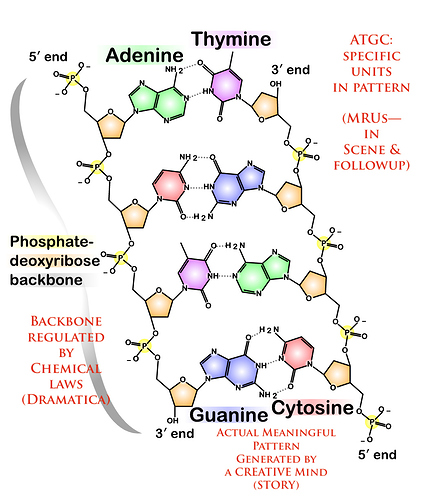I like this term.
With regard to Dwight Swain…I finished my storyforming, my scene planning, and now I’m about to get into the actual scene-writing. I’ve been planning on attacking each Scene/Sequel with Dwight Swain’s MRU way of writing, using advice from other places about looking through the lens of a movie director. I’ve been glad to find several posts where others are trying to incorporate these things.
I made a connection today when I read this topic:
in particular the comment @jhull made when the poster said…
[/quote]
Writing is like DNA.
You’ve got the sugar backbone of the DNA strand, which holds everything, by chemical bonds, one to the other.
And you’ve got the CODE INFORMATION that’s going, in some logical progression within the center, the heart of the DNA. Without the structure outside, the inside won’t stick together and can do nothing, it flops. This is a story that’s only “without” which pantsers are afraid to write. They want the guts. The little ACGT in varied connections and lengths and patterns. Without those letters inside, DNA has no function, goes nowhere. But without the sugar backbone in the first place, telling the ACGT where to line up (in the Coded order) you have all emotion and no story.
Anyway, that’s just a parallel that works for me, coming in late to last year’s Dwight Swain discussion.
Since so much of Dramatica is a formula, we want the creative bit–the “insides” to be formula, but it takes that Code (Encoding) of a Mind to put meaning into a random structure.


 )
)